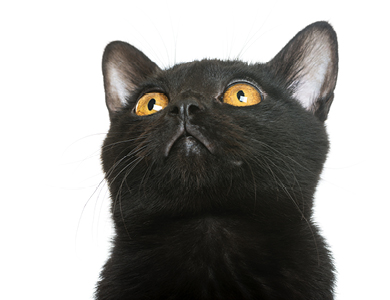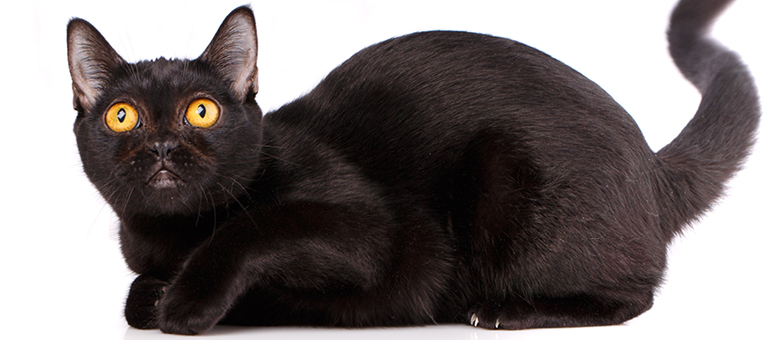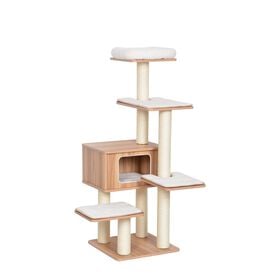The Bombay cat was born out of a breeder’s dream of having an all-black cat, with no white hairs or other colouration in the coat, so it’s not a natural breed, but rather a man-made creation.
Origins
Nikki Horner had been breeding Burmese and American shorthair cats in Louisville, Kentucky, since 1945. In 1958, she decided to try crossbreeding in an effort to create a mini black panther. She began by crossing a black American shorthair with a sable Burmese, hoping that her little panther would have the morphology of a Burmese cat. Her attempt failed. It was only two years later, after numerous selections and tests, that she successfully obtained the black cat of her dreams: a majestic-looking feline, with a deep black coat and bright copper eyes. And so was born the Bombay cat, which, despite its name, has no exotic Indian origin. The name comes from the city of Bombay (now Mumbai), where you can see black panthers.
Between 1966 and 1972, after 27 litters and over a hundred births, the breeder was satisfied with her selections (the Bombay cat’s appearance changed somewhat after the first litter). However, the breed was not officially recognized in the U.S. until 1976. In the end, the Bombay cat’s appearance differed only slightly from that of the American Burmese, the breed chosen from the outset. Despite its exotic look, the breed was never very popular in North America or Europe. In 2014, it ranked only 35th out of 43 in terms of popularity. Superstitions about black cats being bad luck may have something to do with that, although it’s hard to say. One thing’s for sure: the breed was Horner’s great pride.
Morphology and appearance
This magnificent black cat has no white or other coloured hairs. The standard specifies that the cat should resemble a mini black panther, with no tabby markings. Since crossbreeding with zibeline Burmese cats is authorized (for genetic makeup), some kittens can be born with brown markings, in which case they are considered to belong to the Burmese, but never the Bombay breed.
The Bombay is an average-size cat that can weigh up to 5 kg. Some can be much smaller, weighing no more than 3 kg. It is nevertheless muscular, with rather heavy boning. The large eyes, compared with the size of its head, are shades of copper or gold, but never green. Its short coat lies close to the body and has little undercoat, giving it a satin gloss (a vestige of its Burmese ancestors).
Level of maintenance (grooming)
Since Bombays have little undercoat, their coats are fairly low maintenance. A gentle weekly brushing is therefore enough. However, consider putting your white clothing aside if you want to have a Bombay.
Behaviour
Since the breeder’s dream was to have a cat that resembled a black panther, but with an easy-going and gentle nature, yours may have a friendly personality. It all depends on the individual traits that the cat inherits (which can be identified during the socialization period).
The Bombay cat is very agile given its muscular build and small size. Even though it will adapt well to the constraints of your home, it’s best to expect an active and playful cat. Providing vertical space (e.g., shelves, cat trees) in your home will allow your cat to move around easily and choose areas other than tables and countertops to rest. Spending time playing with your cat is also beneficial, and will help the two of you bond. What’s more, the cat will be more affectionate toward you.
Unusual facts
Many of the superstitions surrounding black cats are remnants of false beliefs perpetuated during the Middle Ages. A series of circumstances associated with paganism and the Egyptian goddess Bastet (a black cat) led Pope Gregory IX to declare that black cats were an incarnation of Satan. They were later associated with witches and burned at the stake with them. This was all reinforced by the belief that the plague that ravaged half of Europe had been spread by cats. Ironically, killing cats as a result of this belief only increased the spread of the plague until it was discovered that it was in fact the rats that followed the cats that were responsible for spreading the disease. Despite everything, many people today still believe these myths. As a result, five times fewer black cats are adopted from shelters than any other type of cat.





